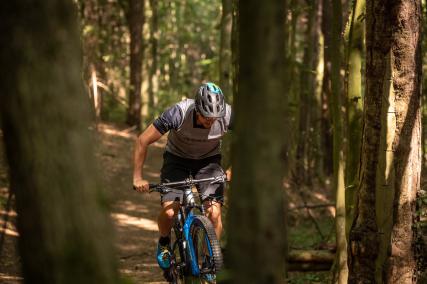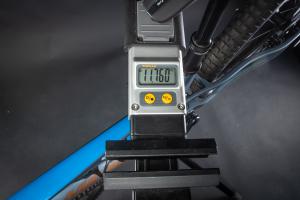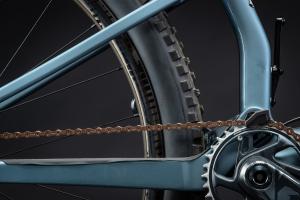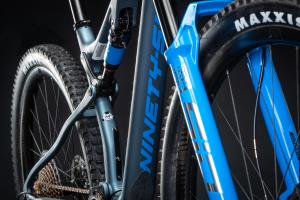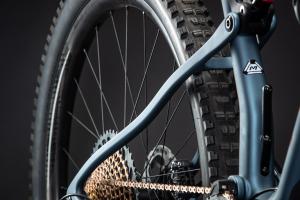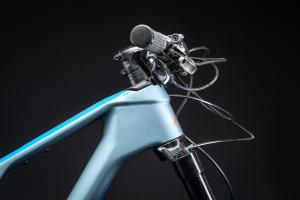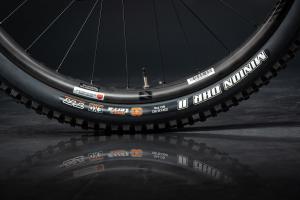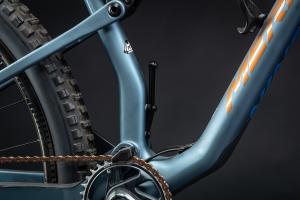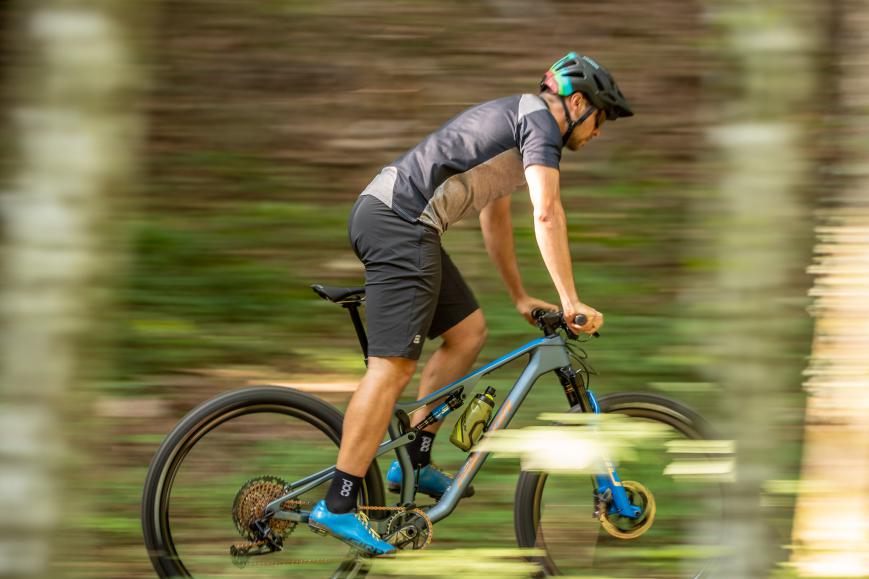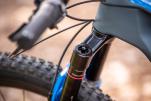
Merida Ninety-Six 8000
13.09.21 07:24 2.9952021-09-13T07:24:00+02:00Text: Luke Biketalker (translated by Carola Felchner)Photos: Erwin HaidenA lightweight, fast and precise ride that still offers sufficient capacities for rough trails? Merida's Ninety-Six 8000 is a flagship down-country bike.13.09.21 07:24 3.3302021-09-13T07:24:00+02:00Merida Ninety-Six 8000
13.09.21 07:24 3.3302021-09-13T07:24:00+02:00 Luke Biketalker (translated by Carola Felchner) Erwin HaidenA lightweight, fast and precise ride that still offers sufficient capacities for rough trails? Merida's Ninety-Six 8000 is a flagship down-country bike.13.09.21 07:24 3.3302021-09-13T07:24:00+02:00On some days, it's wise to be prepared for any eventualities. The same applies to bike tours: there are some that require the kind of bike that is ready for any situation that might or might not occur. As there is a tendency towards diversity noticeable even in the field of all-rounder bikes, however, there is no way to evade giving the tour some basic thought before going for a ride.
If the tour is mainly about distance, metres of altitude and only a few uncertainties regarding trail conditions, bike marketing professionals recommend so-called down-country bikes. Crisp suspension travel between 100 and 120 mm, 29" tyres that roll well, contemporary geometries mainly fit for trail riding and a dropper post extend the range of use of tuned XC bikes and provide more reserves in rougher terrain without excessively curtailing agility and efficiency. The brand's up and coming all-rounder bikes are fast uphill, fast on course, fast on flowing to slightly technical trails and climbs.
We went on several rides and collected massive metres in altitude with Merida's Sixty-Nine 8000 to find out if the bike performs as it should, according to its category label.
It was back in 2008 when the legendary Multivan-Merida Biking Team peaked, and Merida presented their Ninety-Six for the first time. For years Gunn-Rita Dahle Flesjå, José Antonio Hermida, Ralph Näf and Ondřej Cink competed on world elite-level for top results on Merida's fast fully.
The race bike got its last facelift in 2016 - I remember the presentation at the first edition of Eurobike fair's media days in South Tyrol where I rode such an extensive test lap that booths were closed upon my return and I had to no choice but to return the bike to Merida's staff at their dinner table. Not much was heard of the race bike during the following years though.
In 2021, however, the Ninety-Six came back with a bang - and brought another legend back in its slipstream. It was no other than José Antonio Hermida who accompanied the development process. The new edition lacks Hermida's legendary bar ends, but the bike impresses with modern geometry and features based on a lot of experience. The Ninety-Six was re-developed from scratch; it is made for racing on the one hand and for the growing sector of down-country riding on the other. Our test bike, the Ninety-Six 8000, belongs in the second category.
Even though the name remains, rear travel was increased from 96 mm to a full 100 mm and - typical for both XC and DC bikes - 29" wheels were mounted. The 100 mm suspension fork the XC bike comes with is suitable for the racetrack, the DC version is specced with a 120 mm version.
The frame is the same with both bikes, apart from a different carbon layup and - due to the 20 mm fork difference - another geometry of the ride-ready bike. Merida has proved that their development teams know how to work with carbon on the highest level, when it comes to creating their own bikes as well as in toll manufacturing. Our test bike's CF4 frame weighs only 1,845 g, their high-end frame RC CF5 even clocks in at 1,695 g in size M.
And there is some more expert knowledge to be found on the frame, e. g., that (almost) all cables run directly into the frame via their own wire port headset. Only the control for the shock lockout runs through an inlet on the head tube. In order not to weaken the chainstay structure by the internal cable routing, the stays' load-bearing tubes are supplemented by a laminated cable duct on the underside. This leaves enough space for the cable sleeves without having to compromise on the durability of the rear triangle.
Merida’s new rear kinematics are designed for improved durability, reduced weight, and more efficiency. The physical joint above the dropouts that deflected minimally, was replaced by a virtual joint, a leaf spring-like flexing zone around the seat and chainstays.
Also, the flat mount standard for the rear brake, which is becoming increasingly popular in the XC sector, found its way onto the Ninety-Six. Due to its compact design developers could adjust kinematics more freely, and the seatstays also got more space. All other joints with bearings of the 100 mm rear are easy to handle and can be tightened from the non-drive side with the same T-30 torx wrench.
Being an endurance expert, Hermida also insisted on accommodating a second bottle in the frame triangle. With the down tube running very straight – for maximum dropper length – and the resulting kink above the bottom bracket, this was no easy task. An adapter finally was the solution. In addition to the classic mounting on the down tube, there are two mounting points for inner tube and tools on the frame. One is at the front of the top tube, the other above the bottom bracket on the seat tube. The latter may be extended via an adapter in the drill hole spacing and thus serves as an optional bottle cage mount.
Geometry
| Size | S | M | L | XL |
| Seat tube (mm) | 400 | 440 | 470 | 500 |
| Top tube (mm) | 581 | 601 | 624 | 648 |
| Chainstays (mm) | 435 | 435 | 435 | 435 |
| Steering angle | 67° | 67° | 67° | 67° |
| Seat angle | 75° | 75° | 75° | 74.5° |
| BB drop (mm) | 36 | 36 | 36 | 36 |
| Head tube (mm) | 95 | 95 | 105 | 115 |
| Reach (mm) | 420 | 440 | 460 | 480 |
| Stack (mm) | 595 | 595 | 605 | 614 |
| Wheelbase (mm) | 1,136 | 1,156 | 1,180 | 1,203 |
All models in the family have integrated upper chain guides ex works and already point in the direction in which they are heading. In medium size, a 67° steering angle meets a 75° seat angle, and the Ninety-Six 8000 has a moderate 440 mm reach. In addition, the 595 mm stack makes for a sporty and low position, chainstay length measures 435 mm, which is quite balanced for size M. Seat tubes are rather long with 400/440/470/500 mm for the offered sizes S/M/L/XL. Those who consider buying a larger bike because of the compact reach are recommended to check the insertion depth of the seat post in advance.
The chainstays accommodate 29" tyres with up to 2.3". More tyre clearance would have been possible, but in favour of a narrow Q-factor, a wider chainline was abstained from; struts with a diameter of less than 10 mm were not used for the sake of long-term durability.
Merida Ninety-Six 8000
Merida’s down-country Ninety-Six 8000 features a truly versatile and trail-ready component mix. The absolute highlight on a fun-focused 100/120 mm 29er: the bold choice of Maxxis Minion DHR II in TR EXO 3C MaxxTerra version.
RockShox adds a suspension system consisting of a refreshingly blue 120 mm SID Ultimate fork and SID Lux Ultimate shock with TwistLoc handlebar lockout. Shimano contributes a 4-piston XT brake (180/160 mm disc) at the front and a 2-piston XT brake (180/160 mm disc) at the rear; the drivetrain is provided by SRAM with a carbon GX Eagle crank (34 tooth chainring), GX Eagle front derailleur, GX Eagle trigger, XX1 chain and nobly coloured XG-1299 Eagle cassette. Reynolds TR 309 wheels with 30 mm wide carbon rims go well with the 2.3" Maxxis tyres and with the overall concept. The high-quality Prologo Scratch M5 PAS is a comfortable saddle choice, and on the DC bike, Merida added their own 60 mm long stem, and the accompanying carbon flat bar with a width of 740 mm.
For this featherweight of 11.76 kg (medium size, including 21-gram bottle cage), Merida charges € 7,049.
Tech Specs
| Frame | Ninety-Six CF4 III | Crankset | Sram Carbon GX Eagle, 34 Z |
| Front Suspension | Rock Shox SID Ultimate | Cassette | Sram XG-1299 Eagle |
| Rear Suspension | Rock SIDLuxe Ultimate | Chain | Sram XX1 Eagle |
| Brakes | Shimano XT / Shimano XT M8110 | Tires | Maxxis Minion DHR II |
| Handlebar | Merida Team CC, 740 mm | Wheels | Reynolds TR 309 |
| Stem | Merida Team CC II, 60 mm | Dropper | Merida Expert TR |
| Trigger | Sram GX Eagle | Weight | 11.76 kg (medium) |
| Rear Derailleur | Sram GX Eagle | Price | SRP € 7,049,- |
First ride and setup
Even before the first ride, the data already points to the conclusion that this Merida bike is modern by today's standards, but by no means progressive or excessively long. A body height of 180 cm and a saddle height of 75 cm make for a compact riding position on a medium size frame. If I had to choose, I would go for the 20 mm longer L-size bike.
But also on the medium size bike, the riding position is by no means uncomfortable; despite the low front, the position on the saddle is well centred and doesn't cause any unpleasant pressure distribution on the arms. As the seatpost remains deeper in the seat tube on the large size bike, the hip's position would probably shift a little forward in relation to the bottom bracket; on the M-size bike, I compensate for this by pushing the saddle all the way forward. Sporty and efficient, with a good overview and always sufficient feedback and control over both wheels, the Ninety-Six is a calm and pain-free ride, even after many hours.
Regarding the setup, we discovered some weak points. For series production bikes, however, these were already corrected. The reason why a grip was already loose when the test bike was taken out of the box was an ex works damaged bar end that did no longer sufficiently counter the tensioning screw.
Only a hand's width away the next reason for concern was found: the TwistLoc for Sram's suspension remote. Despite bathing it in assembly paste, there was no way it would tighten, but kept slipping upwards and turning away when trying to lock it. It seems that the dimensions of the handlebar are not quite up to standard and that it is too thin for the TwistLoc's diameter. As "emergency” solution the cables of fork and shock are now routed under the brake lever and thus serve as an abutment when locking. For series production bikes, Merida uses handlebars that are slightly "oversized". This should solve the problem for customers.
I was thrilled how cleanly the cable was routed back to the damper, but this also turned out to be a problem I needed some time to find a solution for. Ex works, the cable ran through the head tube into the top tube and from there straight to the lockout lever facing the top tube. So clean, so good.
But how on earth was I supposed to reach the adjustment screw on the rear shock with the integrated Allen key hidden on the fork rebound? As it was hidden under the lockout lever, there was less than a centimetre of space between shock and top tube.
The solution to the problem was as simple as it was efficient - someone at the factory had mixed up the cable routing of the Fox and RockShox specs and put the shock into the mount the wrong way round. Now that the writing is legible, the cable routing runs in a small bend and the adjustment knobs point downwards, the setup can be done properly.
After this short error report, let's return to the actual setup. RockShox' recommendation for my body weight was 93 psi for the fork, but by the end of the test I'd lowered it to 85 psi. This way the fork works really sensitively and is easy on the forearms.
Merida recommends a sag of 30% on the Ninety-Six which is unusual for an XC bike. I found my personal sweet spot at 213 psi and 27%. This way, the rear triangle works great on the trail, but in certain situations reaching for the platform is required. In return you'll get the best of both worlds, uphill and downhill. Down-country, after all.
Test ride impressions
Especially at a brisk pace on flat terrain, but also on gently rising forest roads and somewhat steeper passages, the following applies: if you pedal at a higher cadence, not very smoothly and with an unsteady upper body, Merida's bike calls for an activated damper platform. When pedalling at a low cadence, at a very steady pace or on rough terrain, the damper may remain open.
If you stick to this rule, this bike will turn out to be an extremely efficient and propulsive trail companion. Even though Maxxis' Minion DHR II tyres not outstanding in regard to rolling resistance, the bike willingly reacts to changes in speed and keeps the tempo up well. This makes longer flat rides effortless and - as already mentioned - there is no unfavourable pressure distribution on arms or neck.
The 11.76 kg down-country bike also climbs more nimbly than the coarse tyres would suggest. With the saddle slid all the way to the front, you'll have the good feeling of converting every watt into propulsion without any losses, even after climbing 900 m in altitude.
Even with the platform activated, the rear end remains active enough to smoothen rough ground sufficiently and to provide enough traction on trails. Only in technical passages it is advisable to use the full - opened - potential of the rear triangle.
Downhill, Merida’s bike surprises with a rare balance between agility and manoeuvrability while feeling extremely safe on rough terrain and in steep, blocked drops. The bike is a nimble ride in narrow, slow passages, the rear triangle generates a lot of pop and encourages to go for a playful line. Despite the low front end, the front wheel is easy to lift and precise to set. If it does go astray or starts to slide, the bike will quickly be in control again as the body’s centre of gravity is well placed.
When the going gets steep, rough, and technical, the Ninety-Six surprises with enormous rollover behaviour, a lot of traction and even more control over both wheels. In such passages, it feels as if it had much more suspension travel than it really does. In open mode, the great rear triangle does not get stuck on roots and drops, but rather seems to float over the trail. As a result, even large root carpets and scree fields "disappear" – a certain minimum of speed provided – and you can fully focus on choosing the line and on body position.
In general, the very responsive and well-dampening rear end makes it easy to keep the body in the "ideal position" and to concentrate not on the chassis but on the trail. This is certainly one of the reasons why Merida's down-country bike also feels comfortable in terrain where you might otherwise rather find all-mountain bikes.
One last word on size choice: In the end, I would have preferred the slightly longer L-size frame, especially downhill, as handling would have become even easier. But that is a matter of taste.
Conclusion
| Merida Ninety-Six 8000 | |
|---|---|
| Model year: | 2021 |
| Test duration: | 2 weeks |
| Price: | € 7,049,- SRP |
| + | Lightweight |
| + | Agile & nimble |
| + | Rear end |
| + | Specs & tyres |
| + | Reserves in rough terrain |
| o | Tends to bob without platform |
| - | Cable clutter on the cockpit ... |
| BB judgement: | Trail-proof and as quick as a fox |
Dropper and grippy Maxxis Minion DHR II give no reason for complaint, neither in terms of spec choice nor weight. It's a fact that the shock platform is needed in flat terrain and when pedalling unsteadily (!) uphill – but it's also a fact that it moves in a more agile way with the platform activated than the sticky Maxxis tyres may suggest.
With a another light set of tyres this bike is absolutely fit for some weekend racing.
Downhill, the superbly working rear triangle easily keeps up with the 120 mm fork, despite its mere 100 mm, and even takes it up with longer stroke bikes. It hardly ever gets stuck and is a smooth ride on root carpets and scree. The 100 mm rear triangle makes for a comfortable ride and allows the rider to focus on the trail rather than on the chassis.
The combination of manoeuvrability and playfulness with impressive rollover capacity and a great feeling of safety in steep descents is also remarkable.
The TwistLoc handlebar remote control is not very convincing. On the one hand the twist grip doesn't have a good hold on the handlebars. On the other hand, and that’s the real downer, the system entails a terrible cable clutter. Dropper, two brakes, two unattractively curved cables to rear shock and fork ... This may be convenient for racing, but in my opinion, no one needs a fork lockout in down-country riding, and I'm happy having to reach down to the platform if this makes for a cleaner cockpit. But this is, as so often, a matter of taste.
Fast trail rides, many metres in altitude and a solid mix of flowing trails and technical climbs: If you're looking for a versatile, rather sporty, and moderately designed bike, the Ninety-Six 8000 is the perfect choice.




